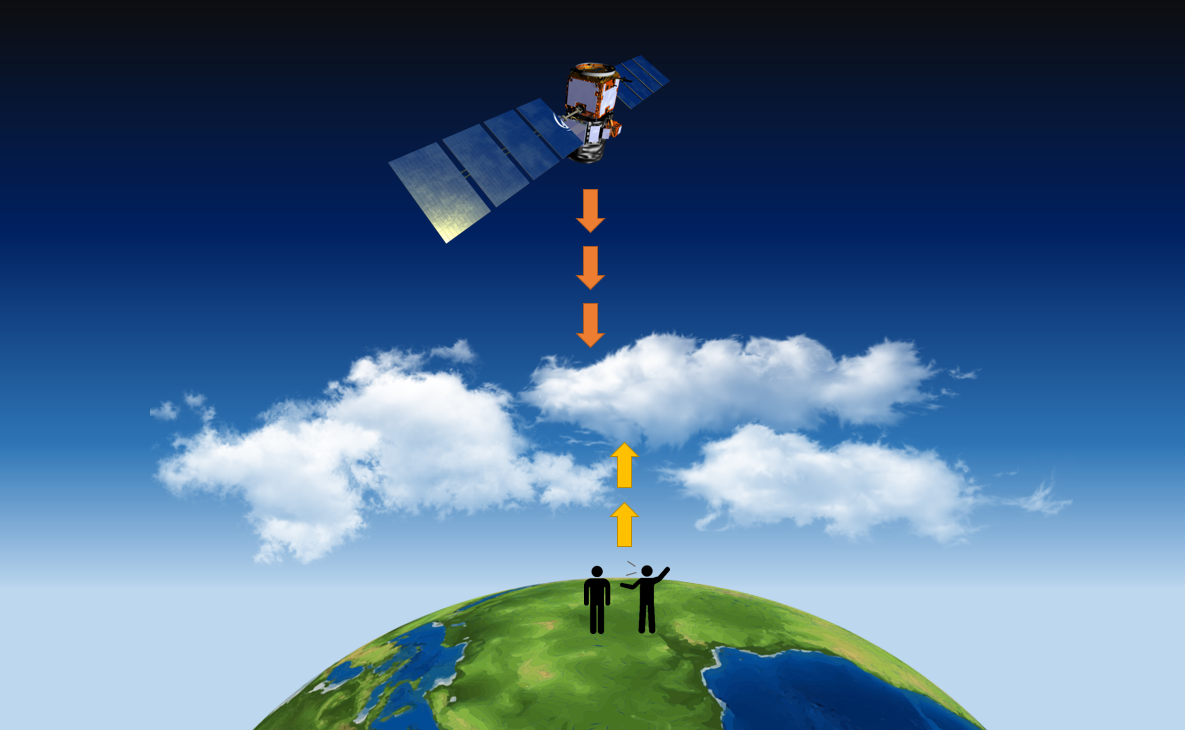News - University of Southern Mississippi
Why Are Your Observations Needed During the Upcoming NASA GLOBE Clouds Challenge? Read This Blog and Find Out!

“Did you know that clouds can both warm and cool our planet? Keeping an eye on clouds helps NASA study our climate. You can notice some of these changes by just looking at the clouds,” Marilé Colón Robles (lead for the GLOBE Clouds Team at NASA's Langley Research Center) said in a recent blog, “Clouds in a Changing Climate.”
“This January, The GLOBE Program would like to invite you all to take part in a new challenge by taking a look at clouds and climate. During the NASA GLOBE Clouds Challenge: Clouds in a Changing Climate (15 January - 15 February) you can help scientists studying clouds and climate by making cloud observations with the GLOBE Observer app. Plus, for this challenge we also have an alternative form of participation you can do from the comfort of your home. You can help identify clouds online through the Zooniverse project NASA GLOBE CLOUD GAZE.”
“We need your ground observations to complement what the satellite cannot see, for example, cloud bases, ground cover, and multiple cloud layers. We also want to match your ground observations of clouds with Earth observing satellites. We would like to get as many satellite matches as possible during this cloud challenge. Help us reach 20K matches by timing your cloud observations! It is easy to do with the GLOBE Observer app since the app lets you know when the satellites will be overhead for you when making cloud observations. Plus, anytime you make an observation that is matched with one made by a satellite you will receive a personalized email from NASA,” Marilé Colón Robles said in the blog.
“Plus, knowing what types of clouds and how many clouds are in an area are important to understand the climate. Photographs of the sky and clouds give scientists the opportunity to see locations from your unique perspective. Sky photographs are one of the most requested portions of a GLOBE Clouds observation. This is because there is so much you can do with them. Details within a photograph can be used to compare with satellite data, confirm dust or haze observations, and give insight to unique cloud types like lenticular and noctilucent clouds over the polar regions.
“This is how the idea for NASA GLOBE CLOUD GAZE came to be. The project allows participants to look at cloud photographs and help classify them. All photographs were submitted by GLOBE participants through the program’s GLOBE Observer app. While classifying users are asked to identify elements such as the presence or absence of clouds, dust storms, smoke plumes and haze layers.”
“To take part in the classification portion of this year’s challenge, go to the NASA GLOBE CLOUD GAZE page on the Zooniverse online citizen science platform. There you can learn more about the project and choose between the two interactives: ‘Cloud Cover’ and ‘What Do You See.’ In each interactive, you will go through a quick tutorial and answer a simple question for each photograph that pops up. The ‘Cloud Cover’ interactive asks you to identify what is the total cloud cover observed in the photograph. The ‘What Do You See’ interactive asks you to identify the type of clouds you observe. For both, choose the best selection and submit. It is that easy!”
“We hope you will plan to join us in January for the NASA GLOBE Cloud Challenge 2022: Clouds in a Changing Climate. As you can see there are multiple ways to participate. In any way that you do participate it will have a large impact in helping us to understand the Earth’s climate. And as a reminder, help us reach our 20K satellite match goal! And continue your observations after the challenge is over to help continue to create a climate dataset.”
To read the entire blog, click here.
For more information on the NASA GLOBE Clouds Challenge, click here.
For more information on The GLOBE Programs app, GLOBE Observer, click here.
For more information on the Zooniverse project NASA GLOBE CLOUD GAZE, click here.
News origin: GLOBE Implementation Office





